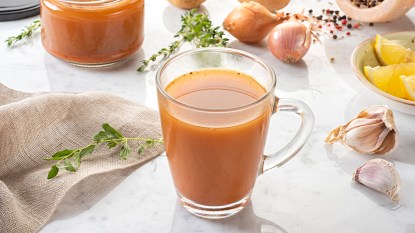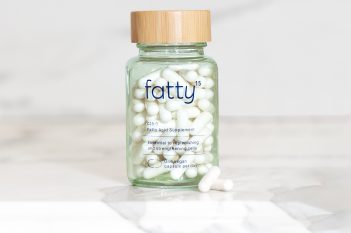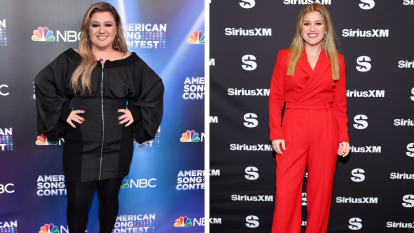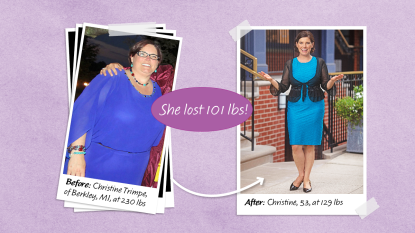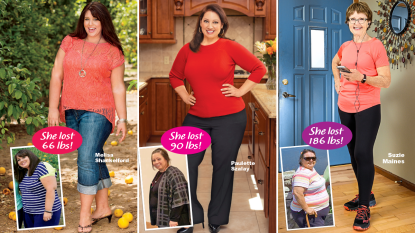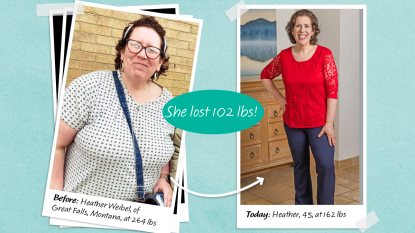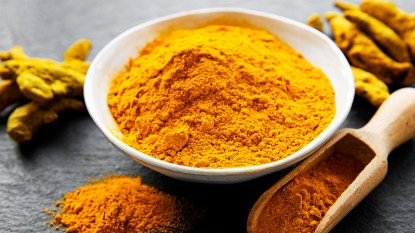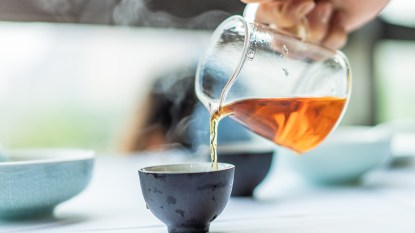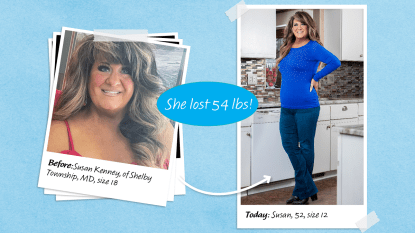The ‘Gel-Water Diet’ Is the Weight-Loss Solution That Fights Brain Fog
Dehydration could be causing pounds to stick.
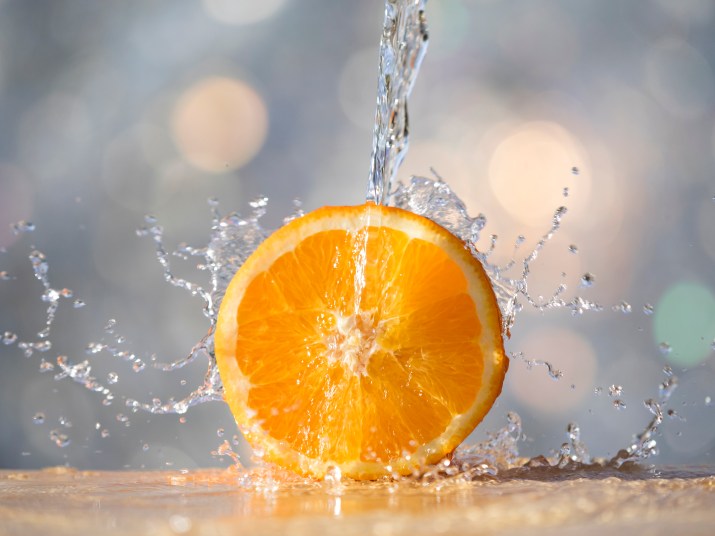
We’ve long heard that drinking more water can help us slim down — and we’re now guzzling it in record-setting quantities. So why are 75 million of us still dehydrated and overweight? Turns out, everything from processed food in our diets to our heated homes can interfere with water absorption, so “we may not get enough water into our cells, where it’s crucial for metabolism and countless other functions” explains Dana Cohen, MD, author of Quench: Beat Fatigue, Drop Weight and Heal Your Body Through the New Science of Optimum Hydration (Buy on Amazon, $25.02). The fix? A game-changing type of water found in many common foods. This ultra-hydrating water ignites so much fat burning that women report dropping up to 40 pounds in 30 days! Introducing the gel-water diet.
Hydration and Weight Loss
Most water is H2O — or so we thought. Groundbreaking research from Harvard and Cornell has found that the water in our cells and in plant cells is actually H3O2. It’s gel-like water that’s been charged by electrolytes. This gel water acts as fuel “for every action of every cell,” notes Gerald Pollack, PhD, head of the University of Washington’s Pollack Water Lab. The science is complicated, but it boils down to this: When it comes to gel water and weight loss, the stuff is magic. It primes our cells to function optimally.
“Weight loss becomes easier than we ever thought possible. We also think better, move better, sleep better, age better,” Dr. Cohen notes. Increasing gel water “is one of the best things you can do for your body. I’ve seen amazing results in hundreds of patients.”
Step 1: Eat your water.
European research shows that consuming plants rich in gel water — including most fruit and veggies — “is up to twice as hydrating as drinking water,” says Cohen. Gel water from plants passes more readily into our cells — and it’s denser and less likely to leak out of damaged or aging cells.
Cohen recommends six servings of gel-water-rich foods daily. Add an extra serving for every dehydrating grain-based food you eat. And avoid processed foods, which siphon off fluid during digestion. What about meat and dairy? There’s evidence that ghee and clarified butter are extremely high in gel water.
Also key: Eat healthy fat. “Water enters cells through an oil-guarded membrane,” Cohen says. “Good fats, especially omega-3s, keep membranes supple, increasing absorption.”
Step 2: Upgrade your sip.
Keep drinking plain water — just give it a gel upgrade by adding fruit like citrus or by sipping it with foods that are rich in potassium (like bananas and broccoli) or magnesium (like avocado and dark chocolate). A pinch of sea salt can help too. “You’ll get electrolytes that transform regular water into gel water,” Cohen explains.
Step 3: Let it flow.
Your fascia — spongy connective tissues that crisscross your body — acts like “an intricate water delivery system that’s activated by small movements,” says Cohen. So tap your fingers, jiggle your legs, twist in your seat. Fidgeting gets hydration flowing! Bonus: Per a Mayo Clinic study, fidgeting can burn 350 calories a day.
Gel-Water Diet Weight-Loss Results
Pittsburgh mom Pamela Brace, 47, has seen the power of gel water. When her local Curves gym recommended a plan that emphasizes hydration, she replaced chips with sliced veggies, cookies with gel-water-boosting cashews, soda with lemon water, and added tons of veggies to her nightly Lean Cuisine. Gentle workouts at Curves helped disperse water through Pam’s body — and she felt reborn. “I’ve never been able to stick to diets before,” she says. “I lost 180 pounds in 14 months. I think everyone should try this.”
Sample Hydrating Meal Plan
Improving hydration works with any diet or with no diet at all, say experts. Just aim for 6 daily servings of gel-water-rich plants; add extra when you make dehydrating picks (like grains or processed food). Best bets: apples, berries, carrots, celery, citrus, cruciferous veggies, kiwi, cucumbers, grapes, greens, melon, pears, peppers, pineapple, tomatoes, and zucchini. Chia seeds, coconut, and ghee also have gel water. Electrolyte-rich foods (sweet potatoes, cashews) and good fats (olive oil, avocado) also promote hydration. Always get a doctor’s okay to try any new weight-loss approach.
Gel-Water Recipes
Breakfast: Loaded Oatmeal: Prepare your favorite oats with unsweetened coconut milk, then pile on hydrating toppings, such as sliced fruit, nuts, and chia seeds.
Lunch: Autumn Salad: Top mixed greens with seasonal additions like sliced apple, diced roasted sweet potato, celery, and onion. Enjoy with a serving of protein (like chicken or goat cheese) and olive oil vinaigrette.
Dinner: Zoodles Marinara: Spiralize two zucchinis; toss with a dash of Italian seasoning plus salt and pepper, then sauté lightly in olive oil over medium heat. Serve with your favorite marinara and optional turkey meatballs and/or Parmesan.
Ultra-Hydrating Raspberry Smoothie Bowl
Cohen recommends a daily smoothie snack since blending gel-water–rich foods makes their hydration even easier to absorb. To make one, try this recipe:
- 1 Tbsp. chia seeds
- 1/2 cup unsweetened coconut milk
- 1/2 heaping cup frozen raspberries
- 2 Tbsp. any nut butter
- 1-2 tsp. maple syrup
- 1 tsp. grated ginger
- 1/4 tsp. cardamom or cinnamon
- Pinch sea salt
- 1 cup filtered water
- Optional garnishes: fruit, nuts, unsweetened coconut flakes
In blender, blitz all ingredients except garnishes. If the smoothie is too thick, add a bit more water to achieve a sorbet-like texture. Garnish as desired; enjoy with a spoon. (Makes one serving.)
This article originally appeared on our sister site, Woman’s World.
We write about products we think our readers will like. If you buy them, we get a small share of the revenue from the supplier.


